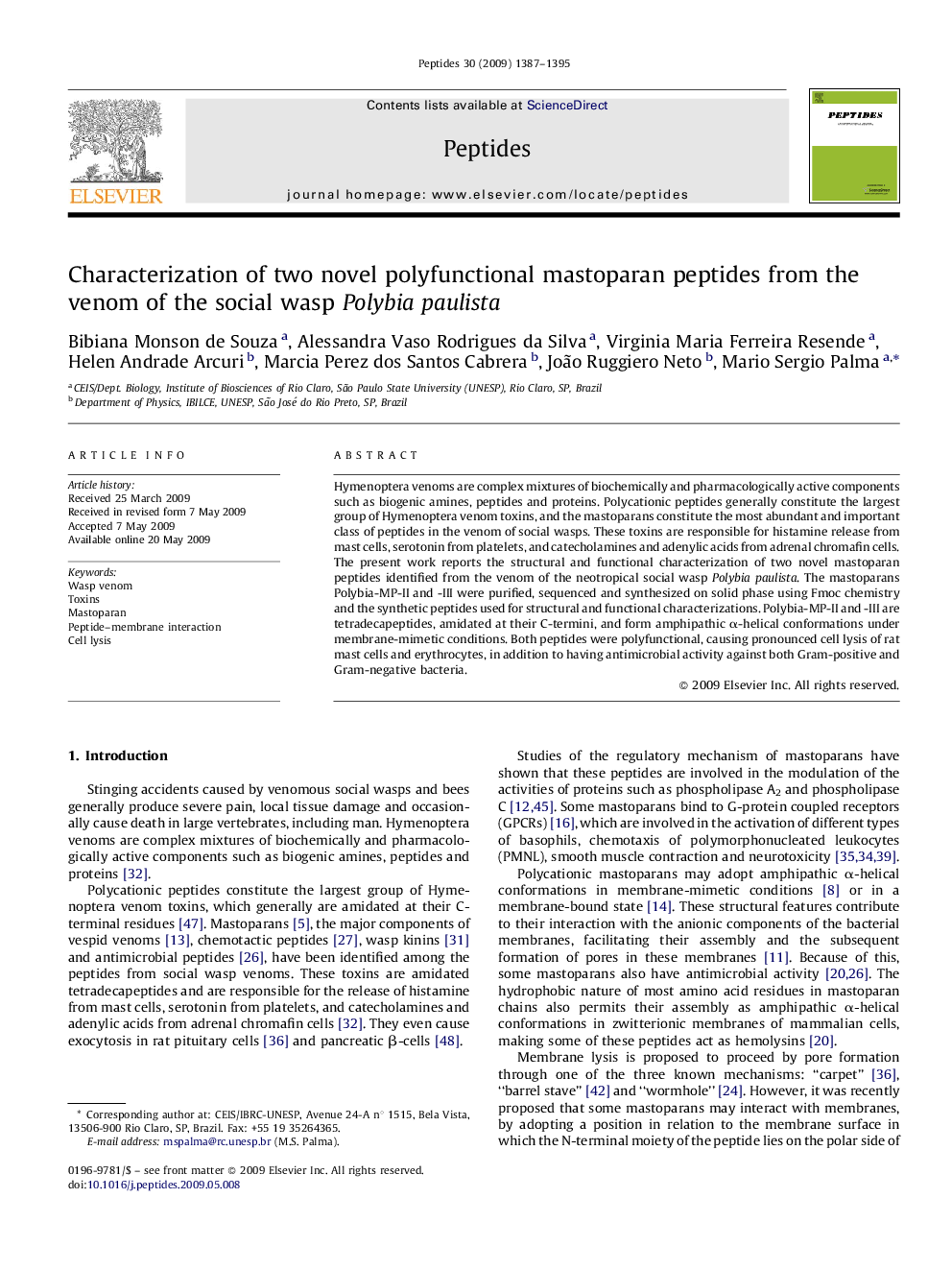| Article ID | Journal | Published Year | Pages | File Type |
|---|---|---|---|---|
| 2007239 | Peptides | 2009 | 9 Pages |
Hymenoptera venoms are complex mixtures of biochemically and pharmacologically active components such as biogenic amines, peptides and proteins. Polycationic peptides generally constitute the largest group of Hymenoptera venom toxins, and the mastoparans constitute the most abundant and important class of peptides in the venom of social wasps. These toxins are responsible for histamine release from mast cells, serotonin from platelets, and catecholamines and adenylic acids from adrenal chromafin cells. The present work reports the structural and functional characterization of two novel mastoparan peptides identified from the venom of the neotropical social wasp Polybia paulista. The mastoparans Polybia-MP-II and -III were purified, sequenced and synthesized on solid phase using Fmoc chemistry and the synthetic peptides used for structural and functional characterizations. Polybia-MP-II and -III are tetradecapeptides, amidated at their C-termini, and form amphipathic α-helical conformations under membrane-mimetic conditions. Both peptides were polyfunctional, causing pronounced cell lysis of rat mast cells and erythrocytes, in addition to having antimicrobial activity against both Gram-positive and Gram-negative bacteria.
